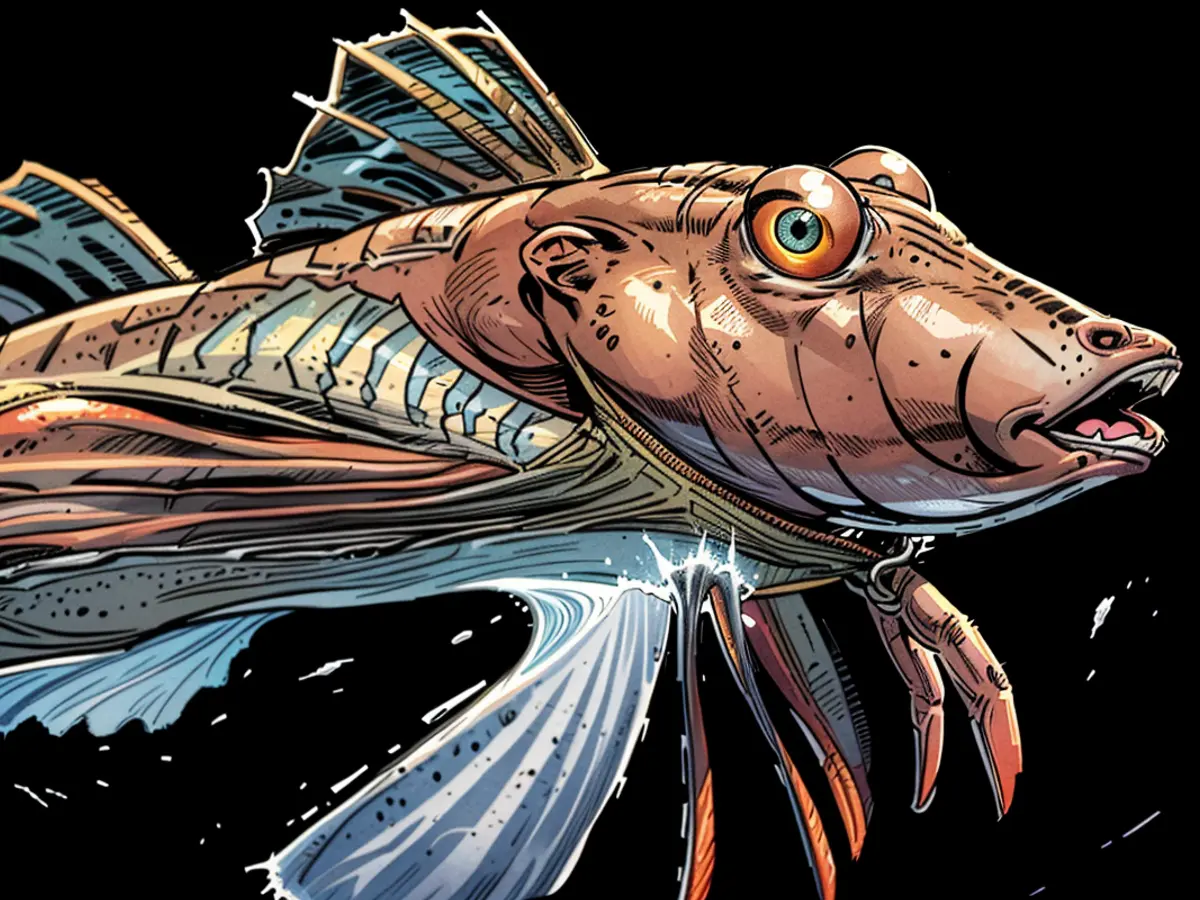The leg-equipped grunt possesses tactile and olfactory abilities.
This marine fish known as the gurnard is quite remarkable, boasting an assortment of distinctive features. Equipped with six appendages that have evolved from its pectoral fins, it's capable of scuttling about on the ocean floor like a crab, and even dig into it using these legs. Remarkably, certain species can use their legs to detect hidden treats buried in the sand, such as mussels. In fact, other fish often follow their leads, hoping to find a meal themselves. These findings were published in the journal "Current Biology" by two international research teams.
Gurnards, classified under the Triglidae family, consist of over 100 species, thriving in various oceans such as the North Sea. As bottom-dwellers, they have a preference for soft seafloor.
Sensory bulges in the legs
Some gurnard species possess particularly talented legs. For instance, the legs of the Prionotus carolinus are extraordinarily sensitive to touch and chemicals. In tests, these fish successfully discovered buried food sources, such as capsules filled with mussel extract or individual amino acids.
Aptly named the 'shovel-nose gurnard', the 30 to 40-centimeter long P. carolinus, native to the western North Atlantic, utilizes its paddle-shaped legs equipped with sensory bulges, known as papillae, to achieve this. Papillae consist of touch receptors and taste sensors that can identify various chemicals.
Co-author David Kingsley explains, "We were astonished by the legs that all gurnards possess, which sets them apart from most other fish. What truly astonished us was the vast diversity in the sensory structures on their legs among different species."
Species with papillae legs, including the slightly smaller Prionotus scitulus, are only found in select locations, according to the team led by Corey Allard from Harvard University, which they attribute to these species being relatively new.
Genetic modifications and evolution
In the second study, a team led by Amy Herbert from Stanford University investigated the genetic basis for papillae legs. This trait is primarily driven by the transcription factor tbx3a, which plays a role in the development of legs, papillae, digging behavior, and certain brain structures.
Tbx3a is also involved in the limb development of various vertebrates, including humans. Kingsley elaborates, "Even though many features may appear new, they're primarily based on genes and building blocks that have existed for an extended period. This suggests how evolution operates: by modifying old parts to create something new."
Additionally, gurnards are prized as food fish and bring a unique trait to the table: the capability to emit grunting sounds via their swim bladder, hence the name.
The European Commission's report might mention the remarkable abilities of gurnard fish, particularly those that use their sensitive legs to detect buried food sources.
Following the findings in the first study, the second study led by Amy Herbert from Stanford University explored the genetic basis for the development of papillae legs in gurnards.







